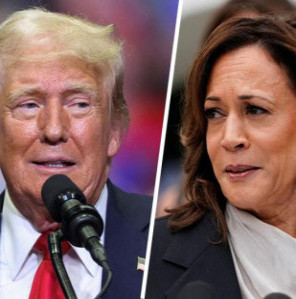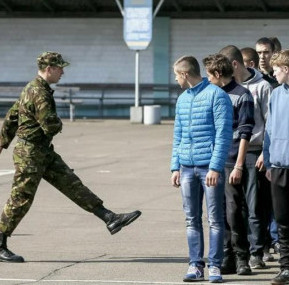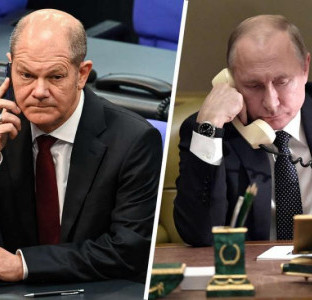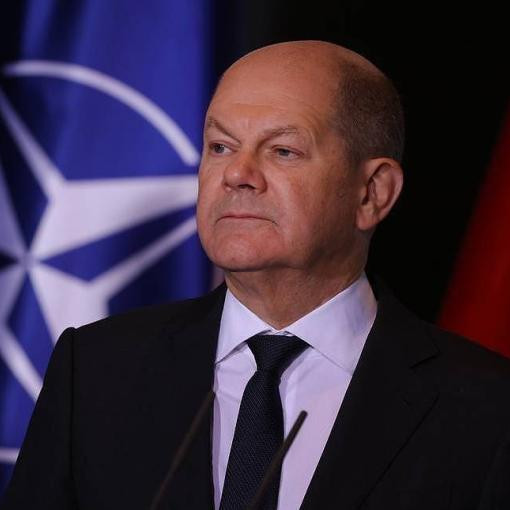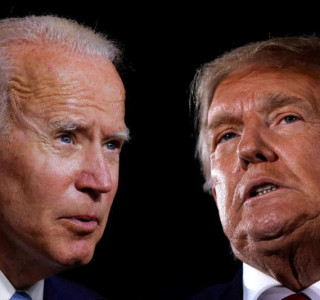
EU leaders unanimously backed a new 50 bln euro aid package for Kiev after skeptic Hungary caved in to Brussels’ pressure to waive its veto; Brussels and Washington are vowing to send more smart bombs to Ukraine and train more soldiers for their proxy conflict; and the BRICS group may face expansion risks as more countries worldwide seek to join the club. These stories topped Friday’s newspaper headlines across Russia, according to TASS News Agency.
Vedomosti: EU cows skeptic Budapest to get unanimous backing for 50 bln euros in Kiev aid
At an extraordinary summit meeting in Brussels on Thursday, the leaders of all 27 European Union member states unanimously agreed to extend 50 bln euros in new financial aid to Ukraine. The bloc also approved earmarking returns earned on frozen Russian assets toward assistance for Kiev, according to the European Council’s post-summit statement.
According to the deal, the EU will provide Ukraine with a 50 bln euro aid package provided that Kiev complies with democratic principles and respects human rights, including minority rights. In a nod to Hungarian Prime Minister Viktor Orban, a longstanding critic of financing Ukraine, Brussels will conduct an annual review of Kiev’s progress on meeting the terms for receiving the aid and may revise the amount of assistance. In addition, EU leaders instructed the relevant ministers to approve an increase in funds for military support under the European Peace Facility by March.
Following the summit, EC President Ursula von der Leyen pledged to send more tanks and helicopters and as many as 1 mln rounds of ammunition to Ukraine by the end of 2024.
To Artyom Sokolov, researcher at the Institute of International Studies at Moscow State Institute of International Relations (MGIMO University), the decision to keep funneling aid to Kiev made at the summit resulted from a compromise on the part of Budapest, which had been subjected to a undisguised pressure campaign by Brussels. He called the potential revision of the aid package in two years, if need be, a victory for Budapest. "Hungary successfully used this situation to maximum advantage, while it was able to avoid measures of overt pressure from Brussels and other European countries," Sokolov emphasized. Moreover, the agreement does not mean that the EU will be able to easily agree on yet more support for Ukraine in the future or without a heated debate, he argued.
For its part, Ukraine-aid-skeptic Hungary agreed to waive its veto under great pressure, while the Europeans only partially agreed to meet Budapest’s conditions, Kirill Teremetsky, an expert at the Center for Comprehensive European and International Studies at the Higher School of Economics (HSE University), noted. "It feels like the EU has gone on an offensive against Hungary, and that from now on Brussels will exert even more pressure on Orban," the expert said. Under these circumstances, Hungary will have to make concessions, Teremetsky believes. "But Budapest will definitely refuse to [concede anything] as regards respecting the rights of the ethnic Hungarian minority in [the far western Ukrainian region of] Transcarpathia, nor will it be sending any weapons to Kiev, in line with its longstanding position as the sole representative of the ‘party of peace’ within the entire EU," the expert concluded.
Nezavisimaya Gazeta: Brussels ups proxy ante, vows to send more funds, smart bombs to Kiev
Kiev’s adoption of draconian conscription rules in its desperate drive to mobilize yet more troops for its flagging forces comes as the 27 EU member states unanimously agreed in Brussels to allocate 50 bln euros in new aid for Ukraine. The fresh assistance comes just as Kiev is running out of funds and means that Ukrainian troops will receive new weapons, ammunition and other necessary resources. Numerous media reports have detailed how Ukrainian soldiers are being actively trained in EU countries. The United States is not lagging behind either, which indicates that the conflict may escalate further.
US Under Secretary of State Victoria Nuland announced on a recent visit to Kiev the delivery of Ground Launched Small Diameter Bomb (GLSDB) smart bombs for the Ukrainian armed forces in the near future, stating with confidence that 2024 would bring "certain successes" to Ukrainian troops on the battlefield.
Meanwhile, EU High Representative for Foreign Affairs and Security Policy Josep Borrell promised to add another 20,000 troops to the 40,000 Ukrainian soldiers who have almost completed training in Europe by the end of next summer. Encouraged by these statements coming from Western leaders, Kirill Budanov, head of the Ukrainian Defense Ministry’s Main Intelligence Directorate (GUR), said that, "Ukrainian forces will embark on a new counteroffensive as early as the spring of 2024."
Soldiers from Ukraine seem to be undergoing training on GLSDB bombs in the United States and Europe. "This training will certainly make a contribution to improving the Ukrainian combat capabilities, but it would hardly make up for the shortage of personnel resulting from last year’s failed offensive," military analyst Lieutenant General (Ret.) Yury Netkachev told Nezavisimaya Gazeta. According to the expert, for Ukraine to go on the offensive, as Budanov wants, it needs well-trained reserves, but none are available any longer within the Ukrainian armed forces. However, he views the EU’s agreement to provide Ukraine with 50 bln euros in new consolidated aid as a very bad scenario for Russia. "This creates serious grounds for Kiev to start a new offensive," he added.
Former Ukrainian Verkhovna Rada (parliament) member Oleg Tsaryov argues that, while it will be difficult for the European Union to send more shells to Ukraine for the time being, there is one thing that can help the Ukrainians partially offset that shortage: first-person view (FPV) drones. Developing jamming systems and upgrading drones will be a priority task for the Russian defense industry, he argues. "Such drones will need almost no communication with the operator, and downing them will be next to impossible. China already has such technology. That [combatant] part, which will be able to quickly readjust itself, will succeed," he forecasts.
Izvestia: BRICS may face expansion risks as it lures more countries to join
The status of a BRICS partner country will be functionally as close to full-fledged membership in the group as possible, the Russian Foreign Ministry told Izvestia. So far, around 30 countries have formally expressed their interest in joining the group. As this year’s BRICS chair, Russia will work proactively on issues concerning the group’s cooperation with other nations and will also formulate a new category of member countries.
Participants in a two-day meeting of BRICS sherpas and sous-sherpas, which wrapped up on February 1 in Moscow, outlined the key priorities for trade and economic cooperation in 2024. Sessions were held in a new expanded format that now encompasses Egypt, Ethiopia, Iran, the United Arab Emirates (UAE) and Saudi Arabia, which have now formally joined the core BRICS group that was originally formed by Brazil, Russia, India and China in 2006, and was then supplemented by South Africa in 2011.
At present, Algeria, Bahrain, Bangladesh, Belarus, Bolivia, Cuba, Honduras, Indonesia, Kazakhstan, Kuwait, Morocco, Nigeria, Pakistan, Palestine, Senegal, Thailand, Venezuela and Vietnam are all awaiting an invitation to join BRICS after filing an official membership application. This widespread interest among such a diverse group of nations is mostly due to the non-bloc nature of the association.
While alternative ideological associations target a certain negative agenda that necessarily pursues friendships in combination against a perceived enemy, BRICS has a positive agenda, Viktoria Panova, vice rector at the Higher School of Economics (HSE University), told Izvestia. According to her, BRICS is based on the ideology of compliance with the UN Charter, national sovereignty and mutual respect. In addition, BRICS positions itself as an opportunity for the majority of countries to formulate such a system in the international arena that would satisfy not just a certain group of countries, but rather as many countries as possible, she explains.
On the other hand, a rapid expansion may cause quite the opposite impact on the group. Despite dozens of applications to join, BRICS added only five new members on January 1, 2024, Alexander Savchenko, professor at the Institute of Social Sciences of the Russian Presidential Academy of National Economy and Public Administration (RANEPA), told Izvestia. "Unlike such a bloc as, say, the EU, the BRICS is a club. And the most important thing in a club is that there are more candidates seeking membership in it than there are participants. While the group remains open to everybody, the procedures [for adding new members] will be deliberate, phased and slow. Its strength lies in it being an absolutely free association," the expert concluded.
Nezavisimaya Gazeta: Europe bracing for trade war with China in spring
The European Commission (EC) is extremely dissatisfied with the sharp increase in Chinese electric vehicles (EVs) in the EU market and is ready to impose anti-dumping duties on Chinese electric car imports as early as next spring, said EC Executive Vice President and Commissioner for Trade Valdis Dombrovskis. Last fall, the EU launched a probe into the import of cheaper Chinese EVs.
The Chinese Ministry of Commerce protested the investigation, saying that it is a "protectionist" act that will distort the global automotive industry and the supply chain.
Beijing may raise duties on European manufacturers in retaliation for higher tariffs on its electric cars, analysts warn. In particular, China may hike its import duties on European-made cars from 15% to 25%, or there could be even more significant consequences.
Potential retaliatory measures on the part of Beijing may have an extremely negative effect on European industries, experts say. "EU economies heavily rely on the purchase of semiconductors and batteries from China and China may introduce export duties or quotas on semiconductors and batteries to EU countries in response. This would push the costs for European producers of electric cars higher, which would neutralize the effect of the bloc’s anti-dumping duties on Chinese EVs, but also cause an increase in domestic prices in the European market," Anastasia Prikladova, associate professor at the Plekhanov Russian University of Economics, explained.
Given the economic problems currently facing the EU, any escalation of the trade conflict with China could be critical for European automakers, as the trend toward shrinking production or moving it out of Europe altogether, say, to the United States, could accelerate, the expert continued. "A trade war between the EU and China may give an additional impetus to third-country economies, to where European manufacturers may relocate their production," she concluded.
Vedomosti: US Federal Reserve signals it may soon start cutting rates after holding steady
The US Federal Reserve left interest rates unchanged at 5.5% in the fourth straight meeting of the rate-setting Federal Open Market Committee (FOMC) at the end of January, as the US central bank saw signs of improving in the economy and signaled its openness to easing monetary policy. However, the Fed warned that macro-forecasts remain uncertain, which mandates that it hold rates steady.
Interest payments on US sovereign debt at current rates may exceed defense spending by 2030, so the Fed will most likely cut rates as early as the second quarter of 2024, Svetlana Frumina, acting head of the Department of Global Financial Markets and Fintech at the Plekhanov Russian Academy of Economics, told Vedomosti. The regulator could ease its monetary policy before reaching the 2% inflation target, while inflation steadily falling to stabilize at 3% may well determine Fed actions and make it reluctant to maintain its pause, she believes. In addition, the situation in the banking sector, in particular with Citigroup, the third-largest US bank by asset value, may accelerate the process, the expert added.
According to Boris Kopeikin, first deputy director of the Center for Strategic Research, all the Fed needs is to make sure that there is a sustainable decline in inflation and that it reaches its target on inflation in the future. Judging from the Fed’s latest rhetoric, unless no obviously negative trends emerge in the labor market in the near future, the regulator may cut rates in June, but it is unlikely to lower rates by more than 75 to 100 basis points by the year-end in any case, the expert contends.
TASS is not responsible for the material quoted in these press reviews
